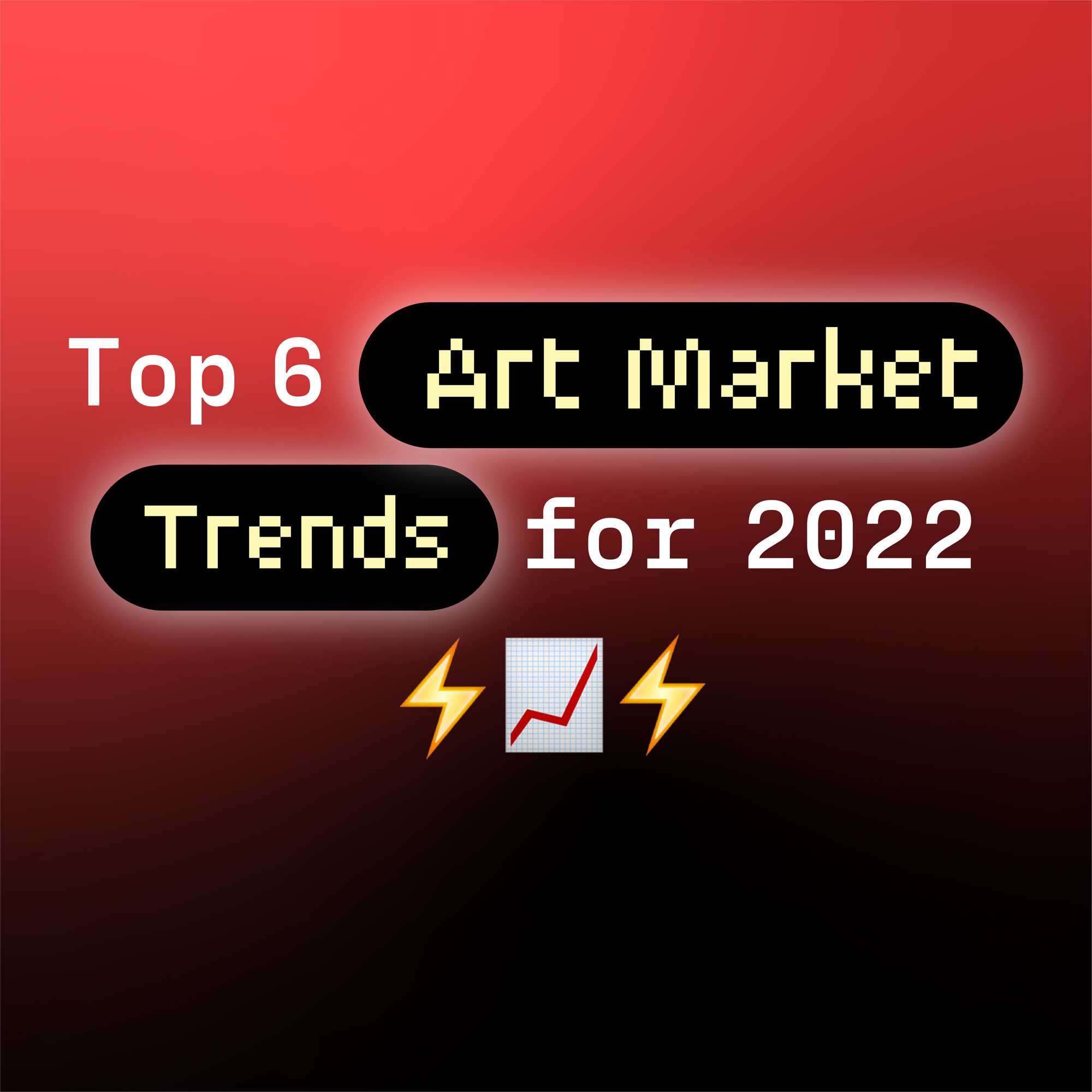Top Six Art Market Trends for 2022
By Terrain.art | Mar 11 2022 · 6 min read
From the rise in NFT art to the boom in digital sales – here are the top six trends that will shape the art market this year.
After a year of intermittent lockdowns in 2020, the art market bounced back in 2021 with art galleries and auction houses focussing on more intimate small gatherings, online sales, and NFT artworks.
Many of these trends are expected to dominate in the years to come as the world grapples with new variants of Covid-19 and the threat of new lockdowns. We have rounded up the top trends in the art market that may have been brought about by the pandemic but may well become a part of the new normal.
Virtual Experience
While the bulk of contemporary art sales continues to be that of physical works and in-person purchases, technological advancements have enabled serious buyers to buy art from the comfort of their own homes. The comprehensive set of digital tools that are now available for art buyers has effectively done away with the need to physically examine a piece of work before buying. Several museums and auction houses are now offering a virtual exploration of their exhibits. Online platforms are using augmented reality to offer an immersive experience of how a particular piece of art might look in a living space.
Rise of Local Artists
The popularity of local home-grown artists has been on the rise for some time now. With Covid-imposed lockdowns, people across the world have come to appreciate local artists and artistic styles even more. With restrictions on travel likely to continue in the months to come, private galleries and exhibitions are likely to opt for local and regional artists, thereby giving a boost to regional artistic styles and movements.
Postponement of Art Fairs and Exhibitions
For the past two years, art fairs and exhibitions had to bear the brunt of constant cancellations and closures. With the threat of a new Covid variant doing the rounds, the situation is likely to continue well into 2022.
The European Fine Art Fair has already decided to postpone its March fair in Maastricht. Organizers of other fairs and exhibitions are in a wait-and-watch mode. In-person exhibitions later in the year are likely to be much more intimate events with timed entries and strict Covid protocols in place. Some of the international exhibitions that still might make the cut include the 59th version of Venice Biennale, which is slated to take place between late April and late November, and the Adelaide Biennial, which runs from March to June.
Rise in NFT Art Sales
Auction houses and other platforms are likely to focus more on new technology to push online sales and NFTs. Encouraged by the astronomical sum that American graphic artist Beeple’s Everydays fetched at the Christie’s March auction last year, more and more auction houses are likely to jump on the NFT bandwagon. In 2021, Sotheby’s sold USD 65 million of NFTs, while arch-rival Christie’s sold more than USD 100 million of the blockchain-enabled crypto art. While critics rush to point out that these figures only constitute 5.5% of their total contemporary art sales, one must remember that it is still a giant leap given the fact that NFTs are just a few years old.
New Clientele, New Tastes
With the shift in art sales, there has also been a change in the client base. Auctioneers note that many of their clients come from a new breed of young entrepreneurs who have made money through crypto. Their tastes are distinctly different from those of traditional art collectors who swear by the names of Warhol or Basquiat. The very idea of what constitutes ‘art’ has been thrown open with digital images of apes jostling for space and buyers’ money in the hallowed halls of auction houses.
Among the items sold by Christie’s in London last year, there was a set of three crude cartoon apes, which were snapped up for USD 1.3 million. Experts say that this shift in artistic taste is reflective of the power of the NFTs, fuelled by the rise of “Metaverse” – a shared virtual world that can be accessed by people to sell anything from clothes to sporting memorabilia. While this has undoubtedly democratized the art world, whether this shift in artistic taste breeds a new aesthetics among artists needs to be seen.
New Business Model
The newfound interest in NFTs has also changed how business has been traditionally conducted in the art market. It has encouraged young, little-known artists to directly reach their target audience. Auction houses too are sourcing their NFTs directly from artists and reaching out to potential buyers through social media. These changes are upending the traditional business structures that have underpinned the art world, where an artist’s primary sales are run by private galleries, while secondary sales have been the focus of auction houses. Artists now can also ignore the entire supply chain of art galleries and auction houses and sell their art directly to buyers through online platforms that sell NFT art.
In India, the first step towards bringing artists and buyers closer has already been taken by Terrain.art – a one-of-a-kind platform that sells NFT artworks through blockchain technology.

